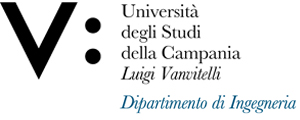Angela RUSSO
Insegnamento di STRUTTURE AEROSPAZIALI PER LA PRODUZIONE ADDITIVA
Corso di laurea magistrale in INGEGNERIA AEROSPAZIALE
SSD: ING-IND/04
CFU: 6,00
ORE PER UNITÀ DIDATTICA: 48,00
Periodo di Erogazione: Primo Semestre
Italiano
| Lingua di insegnamento | ITALIANO |
| Contenuti | Il corso di " Strutture Aerospaziali per la Produzione Additiva (SAPA)" è orientato a fornire allo studente le tecniche di base per la progettazione di componenti strutturali aerospaziali in chiave additive manufacturing. Pertanto, sarà presentata una panoramica generale sullo stato dell’arte delle principali metodologie di fabbricazione additiva e dei materiali utilizzati. Nello specifico, saranno classificati i processi di stampa additiva in funzione dei materiali e delle caratteristiche meccaniche da conferire al componente aerospaziale. Inoltre, saranno forniti gli strumenti necessari per la progettazione, ottimizzazione e verifica dei componenti strutturali finali, tramite l’utilizzo di tool CAD e FEM. Infine, lo studente sarà istruito sul processo di stampa 3D per materiali metallici e Compositi e sulla sua influenza sull’intero flusso di progettazione del componente strutturale. |
| Testi di riferimento | Martin Leary. (2019). Design for Additive Manufacturing. |
| Obiettivi formativi | Il corso di " Strutture Aerospaziali per la Produzione Additiva (SAPA)" è orientato a fornire allo studente le tecniche di base per la progettazione di componenti strutturali aerospaziali in chiave additive manufacturing. Al termine del corso lo studente dovrà essere in grado di descrivere le principali tecniche di additive e i materiali utilizzati per impiego aerospaziale, conoscere i principali processi di fabbricazione additiva per metalli e polimeri ed essere in grado di produrre file .STL e G-Code per la stampa. |
| Prerequisiti | I prerequisiti per affrontare al meglio l’insegnamento proposto sono le nozioni di base acquisite in alcuni corsi della laurea magistrale in Ingegneria Aerospaziale. In particolare, è da ritenersi fortemente consigliato l’insegnamento di "Costruzioni e Strutture Aerospaziali". |
| Metodologie didattiche | Le lezioni frontali (38 ore) hanno una durata di 120 minuti. Sono previste esercitazioni mirate all'ottimizzazione topologica e alla realizzazione dei file .STL per la stampa additiva. |
| Metodi di valutazione | L'esame consiste in un colloquio orale sugli argomenti trattati nel corso e una una discussione delle prove esercitative svolte. |
| Altre informazioni | Le prove di esame sono fissate con cadenza almeno mensile (ad esclusione della pausa estiva) |
| Programma del corso | Il programma del corso è articolato come segue: |
English
| Teaching language | Italian |
| Contents | The "Aerospace Structures for Additive Manufacturing (SAPA)" course is oriented to provide students with the basic techniques for the design of aerospace structural components in additive manufacturing. Therefore, a general overview of the state of the art of the main additive manufacturing methodologies and materials used will be presented. Specifically, additive printing processes will be classified according to the materials and mechanical properties which will characterize the aerospace component. In addition, the instruments necessary for the design, optimisation and verification of the final structural components will be provided through the use of CAD and FEM tools. Finally, the student will be trained on the 3D printing process for metallic and composite materials and its influence on the entire design flow of the structural component. |
| Textbook and course materials | Martin Leary. (2019). Design for Additive Manufacturing. |
| Course objectives | The "Aerospace Structures for Additive Manufacturing (SAPA)" course is oriented to provide the student with the basic techniques for the design of aerospace structural components in additive manufacturing. At the end of the course the student should be able to describe the main additive techniques and materials used for aerospace applications, be familiar with the main additive manufacturing processes for metals and polymers and be able to produce .STL and G-Code files for printing. |
| Prerequisites | The prerequisites for the proposed course are the basic notions acquired in some courses of the Master's Degree in Aerospace Engineering. In particular, the course 'Aerospace Constructions and Structures' is strongly recommended. |
| Teaching methods | Lectures (38 hours) last 120 minutes. There will be exercises on topological optimisation and the creation of .STL files for additive manufacturing. |
| Evaluation methods | The exam consists of an oral interview on the topics covered in the course and a discussion of the exercises completed. |
| Other information | Monthly oral examinations are programmed (excluding summer holidays). |
| Course Syllabus | Course programme: |








